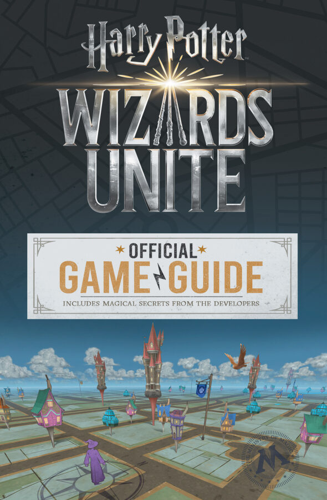Top Challenges Faced by Unaccompanied Minors Flying Alone — And How Airlines Solve Them

When a child travels alone, the experience can be both exciting and intimidating. Airlines around the world offer specialized services to keep unaccompanied minors flying safe and supported, but young travelers still encounter certain challenges during their journey. Understanding these challenges helps parents prepare better and gives confidence that airlines have strong systems in place to manage each one.
This comprehensive article explores the most common difficulties children face while traveling alone and explains the solutions airlines use to ensure every young passenger arrives safely and comfortably.
1. Navigating Busy Airports
Airports are large, crowded, and overwhelming for children. Unfamiliar signs, loud announcements, and endless queues can confuse even adult passengers, making airports particularly challenging for unaccompanied minors flying.
How Airlines Solve This:
-
Assigning trained UM escorts
-
Guiding children through check-in, security, gates, and boarding
-
Keeping them in controlled waiting zones
-
Ensuring minors never navigate alone
Escorts stay physically close to the child, ensuring total supervision at all times.
2. Managing Documents and Identification
Travel documents can be confusing even for adults. A child carrying passports, boarding passes, and UM forms can easily misplace them or forget their importance.
Airline Solution:
-
Staff collect and secure documents
-
UMs receive a travel pouch or neck badge
-
Escorts handle passports through immigration
-
Cabin crew store documents safely inflight
This eliminates the risk of lost documents and ensures proper handling.
3. Communication Barriers and Shyness
Many children are shy about speaking to adults they don't know—especially staff in uniforms. Some hesitate to ask for help, even when they need something.
Airlines Train Staff To:
-
Use friendly, child-appropriate language
-
Kneel to the child’s eye level
-
Speak gently and clearly
-
Encourage questions
-
Check on children frequently
This allows unaccompanied minors flying to feel understood, not intimidated.
4. Fear and Anxiety About Flying
First-time flyers or even experienced young travelers may feel scared about:
-
Being away from parents
-
Sitting alone
-
Turbulence
-
Strange noises
-
Takeoff or landing sensations
Airline Support Includes:
-
Frequent crew check-ins
-
Reassuring explanations
-
Offering toys, snacks, or activities
-
Allowing children to talk about their fears
-
Creating a calm, friendly atmosphere
Emotional comfort is a major part of UM care.
5. Turbulence and Inflight Discomfort
Turbulence can be frightening and physically uncomfortable for children.
Crew Response:
-
Secure seatbelts
-
Stay close to the child’s seat
-
Explain turbulence in simple terms
-
Provide water or tissues
-
Offer distractions
-
Monitor for signs of nausea
Supervision ensures the minor stays safe and calm.
6. Boredom During Long Flights
Sitting in one seat for hours can be difficult for young travelers. Boredom increases anxiety and restlessness.
How Airlines Address This:
-
Inflight entertainment screens
-
Kids’ movies, animations, and gaming options
-
Coloring books or activity kits (on some airlines)
-
Snacks and child-friendly meals
-
Cabin crew checking in periodically
These options keep unaccompanied minors flying relaxed and entertained.
7. Managing Food Preferences and Eating Alone
Children may not like airline food or may feel uncomfortable eating by themselves.
Crew Assistance Includes:
-
Serving UM meals first
-
Helping open packets and drinks
-
Offering mild, child-friendly meal options
-
Monitoring allergies and dietary restrictions
-
Checking frequently if the child is eating comfortably
No child is left to struggle during meal service.
8. Motion Sickness and Physical Discomfort
Children often experience nausea, ear discomfort, or stomach aches while flying.
Airline Solutions:
-
Motion sickness bags ready at the seat
-
Providing water and light snacks
-
Adjusting seat position
-
Allowing short walks when safe
-
Using playful distractions
-
Monitoring symptoms closely
Crew handle mild discomfort swiftly to prevent worsening.
9. Handling Long Layovers or Delays
Delays can cause stress, hunger, and tiredness—especially for unaccompanied minors flying.
UM Assistance During Delays:
-
Dedicated supervised waiting area
-
Escort accompanying them at all times
-
Snacks, water, and comfort items provided
-
Updates shared with parents
-
Activities to keep them occupied
Children are never left alone during delays.
10. Fear of Connecting Flights
Connecting flights introduce complications such as:
-
Gate changes
-
Terminal transfers
-
Airport shuttles
-
Extra immigration checks
How Airlines Ensure Safety:
-
Many limit UM connections to ages 8+
-
Longer layover windows
-
Dedicated escort through every transition
-
Priority movement between terminals
-
Continuous communication between stations
Connections are handled with strict coordination.
11. Dealing With Unfamiliar People
Children traveling alone might feel uncomfortable seeing new faces everywhere, or worse, they might become a target for unwanted attention.
Protection Measures:
-
UM lanyards make staff easily identify them
-
Restricted access zones
-
No unauthorized adults allowed near UM areas
-
Staff positioned around the child continuously
-
Secure handover protocols
Airlines prevent strangers from approaching UM passengers.
12. Inconsistent Understanding of Rules Among Children
Some minors may not fully understand:
-
Safety instructions
-
Seatbelt rules
-
Cabin announcements
-
Instructions during emergencies
Crew Mitigation:
-
Explaining rules gently
-
Using simple, child-friendly examples
-
Demonstrating rather than commanding
-
Double-checking comprehension
This ensures consistent safety compliance.
13. Handling Luggage and Personal Items
Children may forget, drop, or misplace belongings.
How Airlines Help:
-
Escorts assist with carry-on luggage
-
Crew monitor bags placed overhead
-
Staff retrieve misplaced items quickly
-
Arrival escort ensures all luggage is collected
UMs are not left responsible for heavy or complex baggage tasks.
14. Emotional Upset or Homesickness
Children may feel:
-
Sad
-
Lonely
-
Worried
-
Overwhelmed
-
Tearful
Especially during quiet inflight moments.
Crew Support:
-
Friendly conversation
-
Comforting words
-
Reassurance
-
Distractions like movies or coloring
-
Checking in more frequently
Airlines understand the emotional needs of unaccompanied minors flying.
15. Challenges at Arrival Airport
The arrival process can be confusing due to:
-
New environments
-
Immigration queues
-
Baggage claim chaos
-
Crowded arrival halls
-
Anxiety about meeting the pickup adult
Arrival Team Solutions:
-
Priority deplaning
-
Assigned arrival escort
-
Fast-track immigration lanes
-
Help retrieving luggage
-
Secure handover to the EXACT authorized adult
Every step is controlled and supervised.
Conclusion
Unaccompanied minors flying alone face many challenges—from emotional worries and inflight discomfort to airport navigation and document handling. But airlines worldwide have built robust, child-centered safety systems to overcome every obstacle.
Through specialized training, dedicated escort teams, superior inflight care, and strict arrival protocols, airlines ensure that children traveling alone reach their destination securely, comfortably, and confidently.






